March is the cruelest month. At least, it is for anglers in the Rocky Mountains. March flirts with the idea of spring, stringing along enough warm days that the bigger bugs start hatching. After a winter of tossing tiny flies, the size 18 blue-winged olives that first show up in March are a welcome reprieve.
Bridger Lyons and I were riding one of these warm spells, and we’d spent the better part of a week chasing decent hatches across half a dozen counties. We knew the warm spell had to end soon, but neither of us mentioned it out loud. We kept optimistically quiet about the situation, in the same way that anglers stray away from verbally appreciating the lack of wind in the perpetually blowing valleys and high plains of the Rockies. To speak of its absence is to invite it back into being.
That’s why we ignored the bank of black clouds amassing to the west. The air was full to bursting with the quiet stillness of an entire landscape holding its breath as the storm moved into position.
Faint tufts of wind plucked the cheatgrass and sagebrush that are staples of high-plains prairies, but the temperature hadn’t dropped yet. I held my breath too, waiting for the storm to show its hand. Being a native of the Rockies, I have a higher opinion of my weather forecasting abilities than I should, but the scene on the horizon had me flummoxed. I couldn’t tell what way the storm was headed, or when it would make its move.
I was out fishing though, and with good company, too, so I tried to shrug off the foreboding as Bridger parked his truck outside The Quiet Fly Fisher shop in Loa, Utah.
“I’ll be a few minutes,” I said.
Bridger responded by pulling his hat down over his eyes and leaning his seat back. We both hadn’t slept much that week, driving from one water to the next, buoyed by weather that only required a light jacket, and the inescapable feeling of riding a giant stroke of good fortune to its inevitable conclusion.
I walked into the shop and saw owner and guide Mike James behind his desk, tying flies.
“I’m surprised you’re here,” I said. “Shouldn’t you be out there?” I gestured to the window.
“Nah, we fished this morning,” Mike said. “Wanted to get out while the weather was still good.”
“It’s still good,” I said. “It’s not even windy.”
“It won’t be for long,” Mike said.
I asked Mike if he’d recommend Bridger and I go fish anywhere specific. I guide trips for Mike on rare occasions, and he tells me just enough about how the fishing is to make me feel like I’m privy to information that’s kept on the down-low. In reality, Mike’s probably just being a good guide and business owner, but I appreciate the self-confidence boost of walking into his shop and coming away with a guide-recommended spot to chase trout – and a few dozen spare spools of tippet, just for good measure.
Mike pulled out a map and tapped a few smudges of blue. The ponds were on the north end of Boulder Mountain, which is just about 20 minutes from Loa, and boasts some of the best brook trout fishing in America.
“These should fish decent,” Mike said, indicating two ponds in particular. “Big rainbows in this one.”
He said “big rainbows” with the truthful inflection of an angler long since tired of measuring and weighing fish. The bigger fish are usually tougher to catch, harder to fool, and more difficult to put in a net. That’s what makes them fun, and those were the kind of rainbows Mike implied were simply waiting for us to catch.
“How’s the road up there?” I asked. Dirt roads crisscross Boulder Mountain, covering maps of the place in a patchwork of two-tracks that all dead end at lakes or trailheads. I use the term “road” loosely here because the roads on Boulder are more of rock-filled clearings between thick aspen and pine forest than actual driving trails. Most folks only drive these roads in four-wheelers or side-by-sides, but I don’t mind beating my Tacoma up if it means good fishing is just over the next hill.
Once, after parking my truck at a lake on Boulder, an old man in his late 60s walked over and said “Son, that’s the damdest fool thing I’ve ever seen. I broke a four-wheeler in half on this road back in the 70s.”
“How was the fishing back then?” I asked him.
The old guy grinned. “Five pound brookies in every lake. People couldn’t get up here on account of all them broken four-wheelers.”
So, when I asked Mike how bad the road was on that blustery March day, I was anticipating something along the lines of what the old man had described to me years before.
“It’s not terrible,” Mike said. “Standard road for the mountain, I think. But there’s one part you gotta look out for.”
He tapped the map again, and I leaned close to see. There, in slightly italicized print, was the name Snot Hill.
“You don’t want to be up there when the snow flies,” Mike said. “You’ll slide right off the hill the second it gets wet.” He tapped the map again for emphasis.
“That bad, huh?” I asked.
Mike nodded. “If you get into trouble, call me and I’ll see what I can do. But I can’t promise anything.”
“You said there’s big rainbows in there?” I asked.
“Yep.”
“Alright, I’ll call you later and let you know how it fished.”
We shook hands – this was before the pandemic ruined the world and changed how we interact with each other – and I jumped back in Bridger’s truck. He was snoring, so I poked him and told him to start driving. A few curses later and we were on the road, with only one quick stop for some Monster Zero and Dot’s Pretzels, two foods that are unfortunately a staple in my diet these days.
The further we drove from Loa, the less imposing the storm seemed. Boulder Mountain loomed above us, a monolith of green foliage and gray rock, all strategically placed to conceal the mountain’s extraordinary fishing.
I gave directions since Bridger was driving, and after a wrong turn on a few roads, we finally found the one that would dead-end a few hundred yards from the pond with the big rainbows. The only obstacle left was Snot Hill – and the bank of clouds that stood poised on the horizon, like an army waiting for the signal to invade some faraway enemy land.
“This road ain’t that bad,” Bridger said. His F150 careened off a boulder with a leaf-spring jarring thump.
“When it’s dry it’s not bad,” I said. “But Mike told me if it gets wet, we’ll slide all off into the ditches and ravines on the side.”
A few curses, a change into four-low, and a spilled drink later, we bounced through a muddy rut half-full of water and stopped at the base of a long, steep incline. Snot Hill was chalky white dust, and it blew off in tendrils across the slate sky as wind curiously poked through the landscape. Boulder Mountain has a lot of shale and sandstone in its foothills, and Snot Hill looked like a pile of dust from both rocks.
“Up and over the hill, and we’re there,” I said, trying to urge Bridger on.
“If that storm dumps, we’re not getting down this hill,” he replied.
I shrugged. “We can beat the storm, it’s still hanging to the west.”
Bridger sighed, put the truck into gear, and we made it up Snot Hill without so much as a tire slipping. The hill crested onto a top of solid-packed dirt, sage, scrub oak, and cedar. The classic black-volcanic rock that’s iconic on Boulder Mountain poked out from the ground, and a faint trail wound in the direction of the pond with the big rainbows.
Between turning off onto the dirt road and climbing Snot Hill, I hadn’t had a good look at the storm. It was alarmingly closer, although the wind was blowing northeast and I saw blue sky to the southwest.
“It’ll blow right over us,” I gestured. “We’re fine.”
The pond wasn’t much – maybe an acre large, but deep, with promising drop-offs and points and plenty of hidey-holes for trout. There wasn’t much open room on the banks for proper fly casting, so we rigged up indicator rigs while the air around us consistently lowered in pressure. Bridger felt it, and I did too, but we didn’t say anything. To speak of it is to invite it into being.
I’d just made my first cast when thunder ripped the crushing silence. I jumped, and looked at the sky. Swirls of snowflakes danced on thermal currents, and I couldn’t see blue sky anymore. Wind whipped the clouds to every point on the compass, and my stomach sank as I took it in. There was no way to tell what the storm was going to do.
Then the snowflakes turned to sleet. Wordlessly, Bridger and I broke down rods and ran back to the truck, both of us struggling against the altitude and a week of poor diet choices. The closer we got to the truck, the more the sleet turned to rain. It ran in rivulets off the brim of my battered beaver fur fishing hat, and I knew we were in trouble.
The truck’s wipers whirred to keep up with the ferociously pounding rain, and the truck’s motor whined as we slipped through sloppy muck and couldn’t find good traction.
Snot Hill loomed before us. Fifteen minutes ago, it was a white slide of soft, sandy dirt. Now it was stained brown, the consistency of tile grout, and likely just as sticky.
“Well, what’s the call?” Bridger asked.
“We oughta get down while we still can, right?”
“Can we get down that?”
“It’s not that steep or long.”
“No, but look at the big ditches off to the left, just like Mike said.”
I crossed my arms, feeling guilty for getting us into this mess. I’d made a single cast, and Bridger hadn’t even finished tying his flies on before the storm finally made its move and forced us to retreat.
“Just go slow, right down the middle, and hold it tight until we hit that bunch of boulders around the bend,” I said. “We’ll be fine.”
Bridger muttered a few choice curses in my direction, but like a good fishing buddy, he put his truck into gear and we started the drive down Snot Hill.
Now, I’ve white-knuckled my way through a lot of bad roads in the Rockies. Hell, I’ve even blazed a few of my own. But I’ve never been as ready to jump out of a moving truck as I was while Bridger’s F150 slid down Snot Hill. The truck was in four-low and first gear, and Bridger wasn’t touching the brake or the gas. But the truck was heavy enough, and Snot Hill has no solid traction, that we just slid like two kids stuck in a giant saucer sled, shooting down an Olympic-regulation ski jump.
As we slid, for the first time in years, I was legitimately worried something bad would happen. When I was a little kid, I used to have this fear of steep canyon roads and sharp drop-offs. As much as I loved going fishing in those days, I hated holding onto the "oh-shit" handle while my dad careened seemingly carelessly around corners in the old family pickup, putting us just inches away from sure and sudden death.
I knew death didn't await Bridger and I, but that almost-forgotten sense of dread I'd had as a kid returned with more force than I expected.
We hit the bottom of the hill completely sideways, thumping into some rocks with a bone-jarring crash. I got out and checked for any obvious signs of damage, but the truck looked like it had fared better than expected. Behind us, Snot Hill bore a set of tire tracks that were quickly filling with rainwater.
The rest of the drive off the mountain was done in relative silence, while the windshield wipers beat furiously against rain that didn’t want to let up. Even after we made it back to pavement, the storm lashed around us. Any hopes of finding blue-wings rising, or big fish waking up to the first hints of spring, were gone. Above us, the top of Boulder Mountain was covered in clouds so thick I knew we’d see snow on the peaks once the storm cleared.
Later, after telling Mike that we’d barely made it off Snot Hill in time to escape something really terrible, Bridger and I stopped at a burger joint in some lonely truck stop town. I bought his dinner, because that’s what good fishing buddies do when the weather derails even the best-laid of plans. Neither of us felt too bad about how the week ended, though. We’d been fishing on borrowed time since the warm spell started, and now, it was our turn to go back to reality and wait for another glimpse of spring.
Spencer Durrant is a fly fishing writer, guide, bamboo rod builder, and novelist from Utah. He’s the News Editor for MidCurrent, and a regular contributor here at Hatch Magazine. Connect with him on Instagram/Twitter, @Spencer_Durrant.





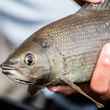


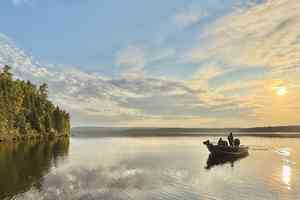


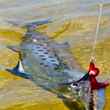
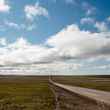







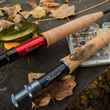





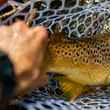



Comments
Milo replied on Permalink
Yeah, been there. With a fishing buddy and we decided to cut the shortest route to the next river. The map identified a straight, benign looking logging track, and on entering we barely registered the sign that said 'Do Not Use When Wet' or something similar. Shortly into the drive, the rain began. The track was domed with deep ditches on both sides and small hillocks. YOu could almost stay in the middle by being super slow amd careful, but once you crested a little hill, you could not avoid sliding down and slewing off into a ditch with zero traction. About 5 miles of this, into the ditch about 20 times. It was a gut wrenching nightmare but miraculously the truck came out unscathed. I purchased some snow chains the next week though....
Pages